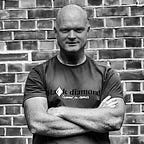Cold Water Swim Project
Sitting on my couch, really happy and exhaused. 19 triathletes have been helping us doing very interresting medical research about swimming in cold water. We have learned a lot!
This research project is a combined study with Oslo University Hospital, Norwegian School of Sport Science(NIH) and The Norwegian Olympic and paralympic Committee and Confederation of Sport (Olympiatoppen) As finacial partners we have Isklar Norseman Xtreme Triathlon and Norwegian Triathlonfederation. I am very happy to have such competent group of people to help me.
We used social media like facebook and twitter to search for volounteers. “Would you like to swim 3800 meters in 10 degrees celsius water?” The respons was overwhelming.
The athletes came to Norwegian School of Sport Science individually after a fixed schedule. There they did physiological tests, like bone density, total body composition, fat content and pulmonary function tests. Therafter the athletes came one by one down to the ocean at Høvik, where they first had a medical checkup by Maria and me. The purpose of this checkup was to eliminate any latent heart conditions. An anamnesis and a ECG of every athlete. After this, they put on their wetsuit and mounted the tools for measuring core temperature, skin temperature and heartrate. Just before the athletes jumped into the water, we also did a spirometry.
During the three days of testing, the water temperature was between 9,1 and 10,3 degrees celsius. For us, this was a perfect temperature. Yes, it is cold. But that was our aim. Most of the athletes got adjusted well to the water temperature as they did their swimming, and everything went well for everyone. We had three or four paramedics at the swim site at all times, as well as a doctor and rescue personell.
First thing when the athletes came out of the water, we did another spirometry. Then the athletes came indoors and where able to take their wetsuit of. We did keep the core temperature probe mounted for 45 minutes after the swim to measure if any afterdrop in temperature. After that the athletes went back to the Norwegian School of Sport Science to do more tests.
This was just a short recap of what we did. Now we work on the data we´ve collected. Can´t wait to analyse and publish!
If any quiestions, dont hesitate to contact me at jorgen at melau.no
